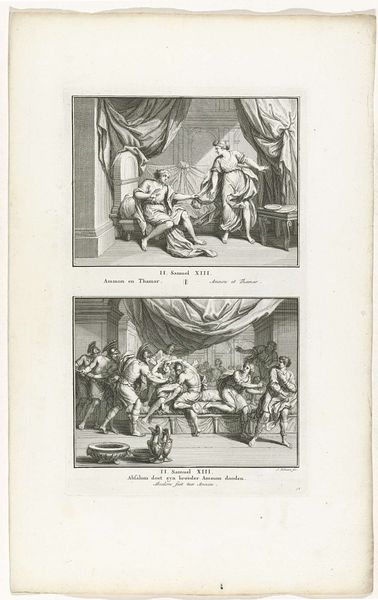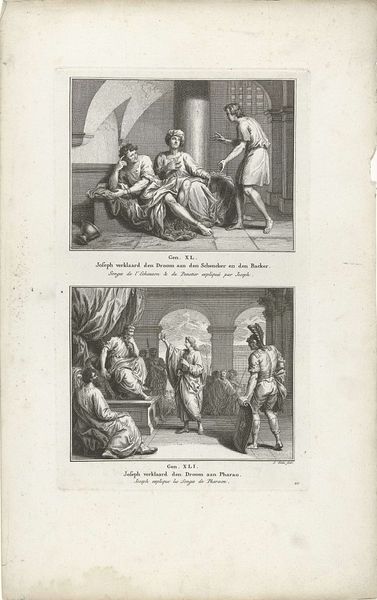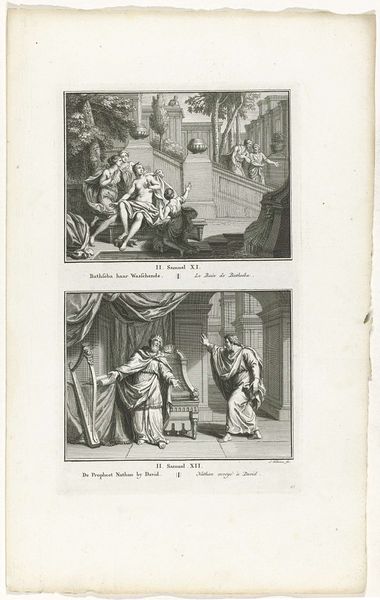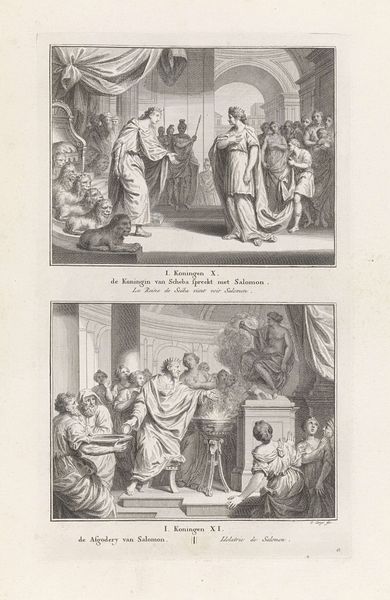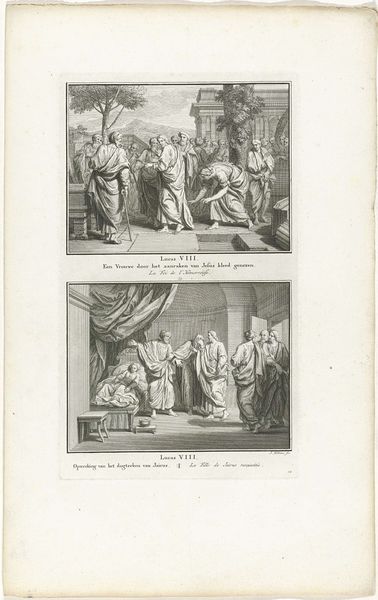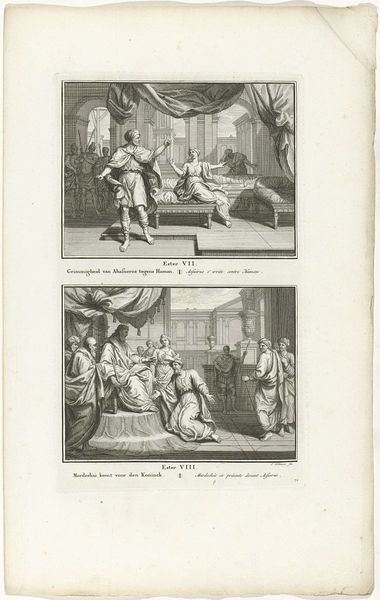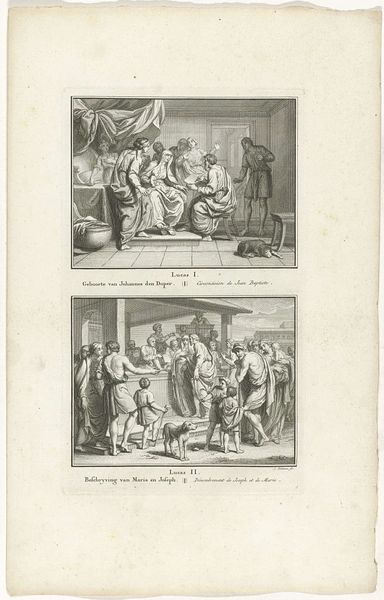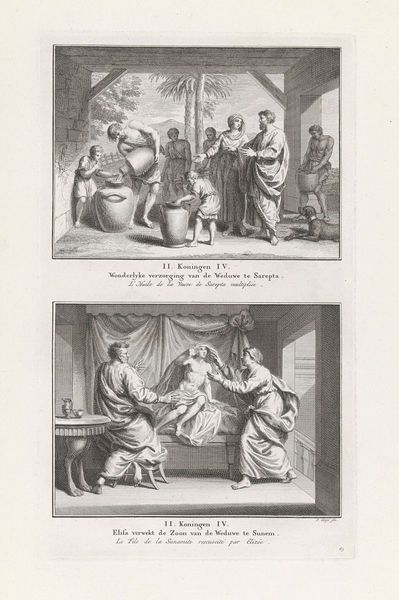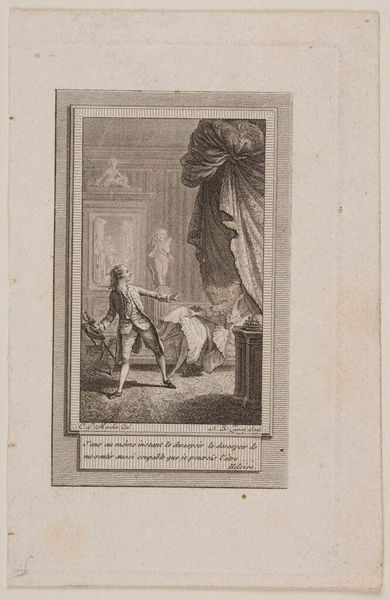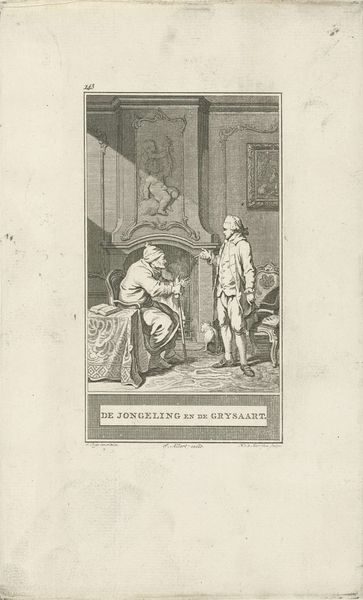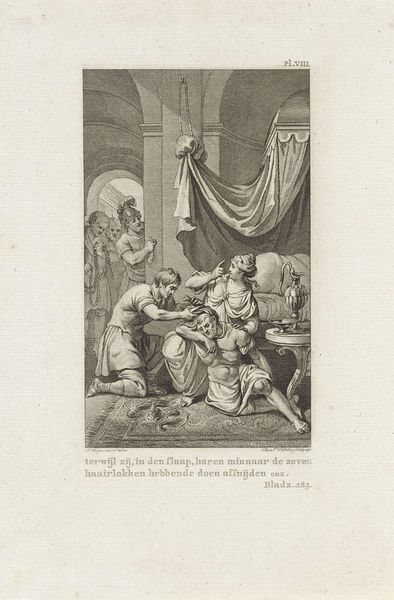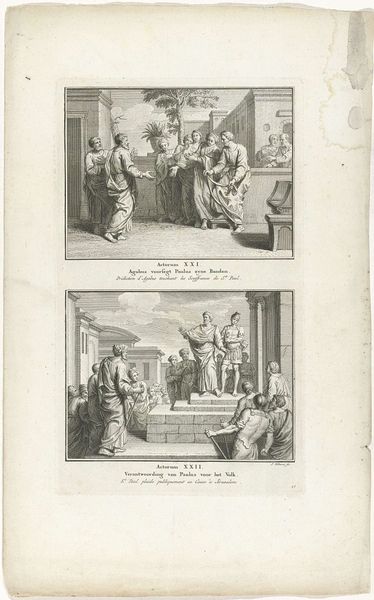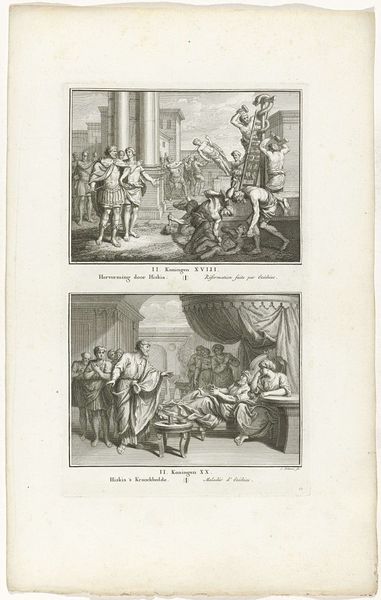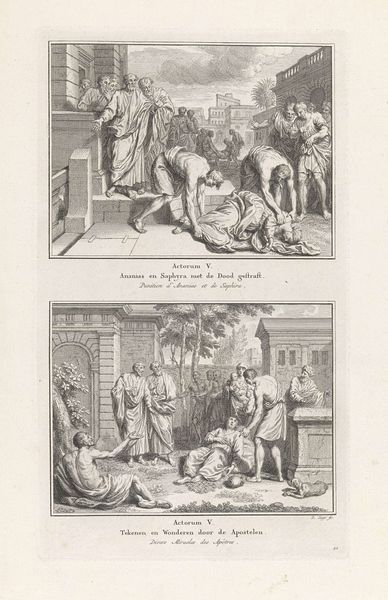
Dimensions: height 324 mm, width 193 mm
Copyright: Rijks Museum: Open Domain
Editor: So, this print is called "Esau verkoopt zijn eerstgeboorterecht en Isaak zegent Jakob" by Simon Fokke, from 1791. It’s an engraving showing two scenes, and I’m struck by the theatrical feel, almost like a stage play. The poses seem very deliberate, especially in the lower scene. What can you tell me about it? Curator: That theatricality is key, reflecting the broader socio-political function of art in the late 18th century. These engravings served not just as devotional images, but as accessible visual narratives disseminating biblical stories and, crucially, reinforcing moral lessons for a wide audience. Do you notice how the artist stages each scene so clearly? Editor: Yes, they’re very clearly separated, with Esau and Jacob depicted quite differently in terms of their actions and demeanor. It feels like they were composed to offer maximum visual and didactic impact. The text underneath certainly helps! Curator: Exactly! Printmaking allowed for widespread distribution and discussion. Think about it: this artwork entered homes, schools, perhaps even coffee houses, prompting discussions about inheritance, morality, and the very nature of power. It’s less about high art and more about popular culture, shaped by institutions aiming to mold public opinion. Were these kinds of images typically displayed in homes at the time? Editor: I imagine so. It seems like they would have offered ample opportunity for moral discussions between family members or even in wider community settings. It definitely was a vehicle for education, almost like a visual sermon. I suppose I’m just struck by how art could be explicitly used in a broader cultural framework. Thanks! Curator: And it prompts us to think about what other functions art can and should have!
Comments
No comments
Be the first to comment and join the conversation on the ultimate creative platform.
